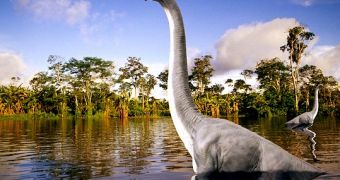With the help of data regarding the fossils of as much as 4,000 known species of mammals that lived on Earth up to 60 million years ago, Aaron Clauset of the Santa Fe Institute and Douglas Erwin of the National Museum of Natural History created one of the most accurate computer models that estimates how the body size of mammals evolved in the last 50,000 years or so. Computer model predictions indicate that mammals tend to get bigger with the passing of time, having ancestors slightly smaller than the new species, although there aren't many large species today because extinction favors small animals.
"The tendency for evolution to create larger species is counter-balanced by the tendency of extinction to kill them off. The distribution of sizes over time is stabilized because these processes balance out," Clauset said. Although the study was limited only to mammals, researchers argue that the same should be available in the case of other animals.
But why does evolution favor large mammals in the first place? First of all, being large comes with more advantages than disadvantages. For example, being bigger will automatically ensure that you have a better chance of fending or escaping predators. Then, the additional body mass presents a great opportunity to store food reserves. Humans are more likely to resist several days without eating, while smaller animals will die much sooner.
Furthermore, a larger body gives mammals the ability to travel much faster and farther away to find food, and maintains heat for a lot longer. These advantages will do no good however, if the habitat in which they are living isn't big enough or cannot provide the necessary food and water.
But being small is not that bad either. Hiding from predators is much easier when you're tiny. In birds on the other hand, evolution seems to bring them to a smaller size, as opposed to predictions.
"The common ancestor to birds is Archaeopteryx, which was about half a meter in length. Most of its descendants, however, are much smaller, perhaps because it's easier to fly when you aren't very big. What's interesting is we really don't understand fundamentally why some of these factors dominate in some situations, but not in others. Fortunately, our model shows that together they have a relatively straightforward effect on the number of species sizes of one size or another," Clauset said.
The idea on which the model is based is in fact more than 100 years old, was first proposed by paleontologist and anatomist Edward Cope, and is currently known as Cope's rule. This is the first time when a model shows that Cope's rule predicts the evolutionary process for mammals.
"What's novel about our work is that we combine many of previous ideas about the evolution of species' body sizes into a single quantitative framework that can be directly tested with empirical data. In the past, theoretical work has connected with data only qualitatively," Clauset said.

 14 DAY TRIAL //
14 DAY TRIAL //